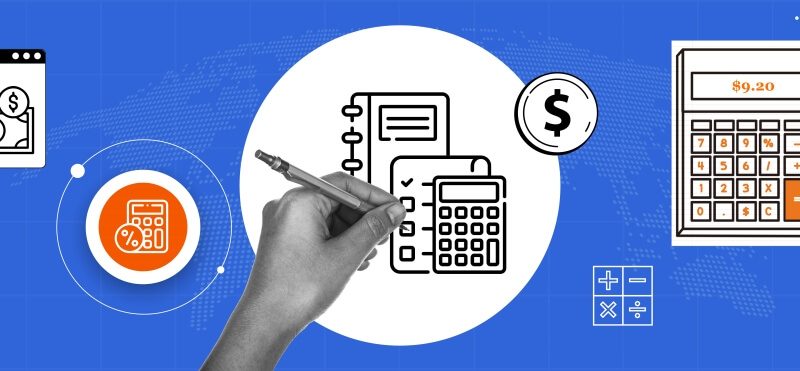Price is a critical element of any marketing strategy. It is the amount that customers are willing to pay for a product or service, and it plays a significant role in determining the success of a business. Pricing penetration is a common strategy that companies use to enter a new market or introduce a new product. This approach involves setting a low price for the product or service in order to gain market share. Another pricing strategy is price skimming, which involves setting a high price for the product initially and then gradually lowering it over time. These pricing strategies can be effective in certain situations, as they can help a company gain a foothold in a market, establish its brand, and generate buzz around the product or service. In this article, we will discuss these pricing strategies in more detail and examine how they can be used to gain a competitive advantage in the market.
Understanding penetration pricing
Penetration pricing is a pricing strategy that involves setting a low price. This strategy is often used by new entrants in a market who are looking to gain a foothold and establish their brand. Penetration pricing aims to generate buzz around the product or service, attract customers away from competitors, and gain market share. The objectives of penetration pricing include increasing sales volume, gaining market share, and building brand recognition.
Penetration pricing can be an effective strategy for companies with a limited marketing budget and looking to break into a market. By setting a lower price point, the company can attract price-sensitive customers who are more likely to try the product or service.
However, there are several factors that companies need to consider when implementing penetration pricing. Firstly, they need to determine the ideal price point that will be attractive to customers while still allowing them to make a profit. Secondly, they need to consider the competition and ensure that their pricing strategy is competitive. Finally, they need to consider the target market and ensure that the product or service is priced correctly for that market.
Comparison with the price skimming strategy
While pricing penetration and price skimming are both pricing strategies that companies can use to gain a competitive advantage in the market, they differ in their approach and objectives.
Price skimming involves setting a high price for a product or service initially and then gradually lowering it over time. This strategy is often used for new and innovative products. The goal of price skimming is to maximize profits by targeting early adopters who are willing to pay a premium for the product or service and then gradually lowering the price to attract a wider customer base. This strategy is often used to recoup research and development costs and generate a high profit margin.
One of the main differences between pricing penetration and price skimming is their pricing approach. While pricing penetration involves offering a low price point to attract customers, price skimming involves offering a high price point to attract early adopters who are willing to pay a premium for the product or service.
Another difference is their objectives. While pricing penetration focuses on gaining market share and building brand recognition, price skimming is focused on maximizing profits and recouping research and development costs.
It’s worth noting that both pricing strategies have their own advantages and disadvantages. While pricing penetration can help companies establish their brand and gain market share quickly, it can also result in short-term profit reduction. Price skimming can help companies maximize profits, but it can also create a perception of exclusivity and may not be effective for products that have a short lifespan or are quickly outdated.
Choosing the best penetration strategy
Penetration strategies are a set of tactics used by companies to gain market share by increasing the adoption of their products or services. These strategies are used to overcome barriers to entry, including competition, customer loyalty, and brand recognition.
Companies can use several types of penetration strategies, including price-based, marketing-based, and product-based strategies. Each of these strategies has its own set of tactics and can be used in various combinations to achieve specific objectives.
Price-based penetration strategy
Price-based penetration strategies focus on offering products or services at lower prices than competitors. These strategies aim to increase the adoption of a product or service by offering customers a lower-priced alternative. Companies can use these tactics to gain market share by attracting price-sensitive customers who are more likely to switch to a lower-priced product or service.
One example of a price-based penetration strategy is loss leader pricing, where a company sells a product at a loss to attract customers to its brand. Another example is value pricing, where a company prices a product or service lower than its competitors but maintains a higher perceived value.
Marketing-based penetration strategy
Marketing-based penetration strategies focus on increasing the visibility and awareness of a company’s products or services. These strategies aim to increase the adoption of a product or service by making it more visible to customers. Companies can use these tactics to gain market share by increasing their brand recognition and attracting new customers.
One example of a marketing-based penetration strategy is content marketing, where a company creates valuable content to attract and retain customers. Another example is influencer marketing, where a company partners with influential individuals to promote its products or services.
Product-based penetration strategy
Product-based penetration strategies focus on improving the product or service to increase its adoption. These strategies aim to increase the value proposition of a product or service by making it more attractive to customers. Companies can use these tactics to gain market share by creating products or services that are more desirable than their competitors.
One example of a product-based penetration strategy is product differentiation, where a company creates a unique product or service that stands out from its competitors. Another example is innovation, where a company improves an existing product or service or creates a new one that solves a problem for customers.
Advantages of penetration pricing
Penetration pricing offers several advantages for companies. Firstly, it can increase sales volume, as customers are more likely to purchase a product that is priced lower than its competitors. This can help a company to gain market share and establish its brand. By offering a lower price point, companies can attract price-sensitive customers who may be more likely to try the product or service.
Secondly, penetration pricing can provide a competitive advantage, as customers may perceive the company as offering better value for money. By offering a lower price point, companies can gain a competitive advantage over their competitors. Customers are more likely to choose a product or service that offers better value for money, and by offering a lower price point, companies can attract those customers.
Thirdly, penetration pricing can encourage word-of-mouth marketing, as customers who are satisfied with the product or service may recommend it to others. By offering a lower price point, companies can attract more customers who are more likely to spread the word about the product or service.
Disadvantages of penetration pricing
Despite its benefits, penetration pricing also has some disadvantages. Firstly, it can result in short-term profit reduction, as companies need to sell more units to make up for the lower price. By offering a lower price point, companies may not make as much profit on each unit sold. This can result in short-term profit reduction, which may not be sustainable in the long run.
Secondly, customers may perceive the product or service as having lower quality, as they may associate low price with low quality. By offering a lower price point, companies may create the perception that their product or service is of lower quality than their competitors. This can make it difficult for the company to establish their brand and generate long-term sales.
Thirdly, it can be difficult to raise prices once the product or service has been established at a low price point. Customers may become accustomed to the lower price point and may not be willing to pay more for the product or service once the company raises the price. This can make it difficult for the company to increase profit margins in the long run.
Finally, companies may attract the wrong customer segment, such as bargain hunters, who are not willing to pay full price for the product or service. By offering a lower price point, companies may attract customers who are only interested in getting a good deal rather than the quality of the product or service. This can make it difficult for the company to establish its brand and generate long-term sales.
Best practices for implementing penetration pricing
To effectively implement penetration pricing, companies should follow some best practices. Firstly, they should conduct research and analysis to determine the ideal price point for their product or service. This can involve analyzing production costs, researching the competition, and determining the target market.
Secondly, they should set clear objectives for the strategy. This can involve determining the target market, the desired level of market share, and the expected profit margins.
Thirdly, companies should create a pricing strategy that takes into account the competition and the target market. This can involve offering discounts, promotions, or bundles that make the product or service more attractive to customers.
Finally, companies should monitor the results of the strategy and make adjustments as necessary. This can involve tracking sales, customer feedback, and profit margins to ensure the strategy works as intended.
Penetration pricing: Conclusion
Penetration pricing is a pricing strategy that can be effective for companies looking to gain market share and establish their brand. While it has several advantages, it also has some disadvantages, and companies need to carefully consider the factors involved before implementing it. However, if implemented correctly, penetration pricing can be a powerful tool for companies looking to succeed in a competitive market. By following best practices and monitoring the strategy results, companies can use penetration pricing to generate buzz around their product or service, attract customers, and gain market share.






